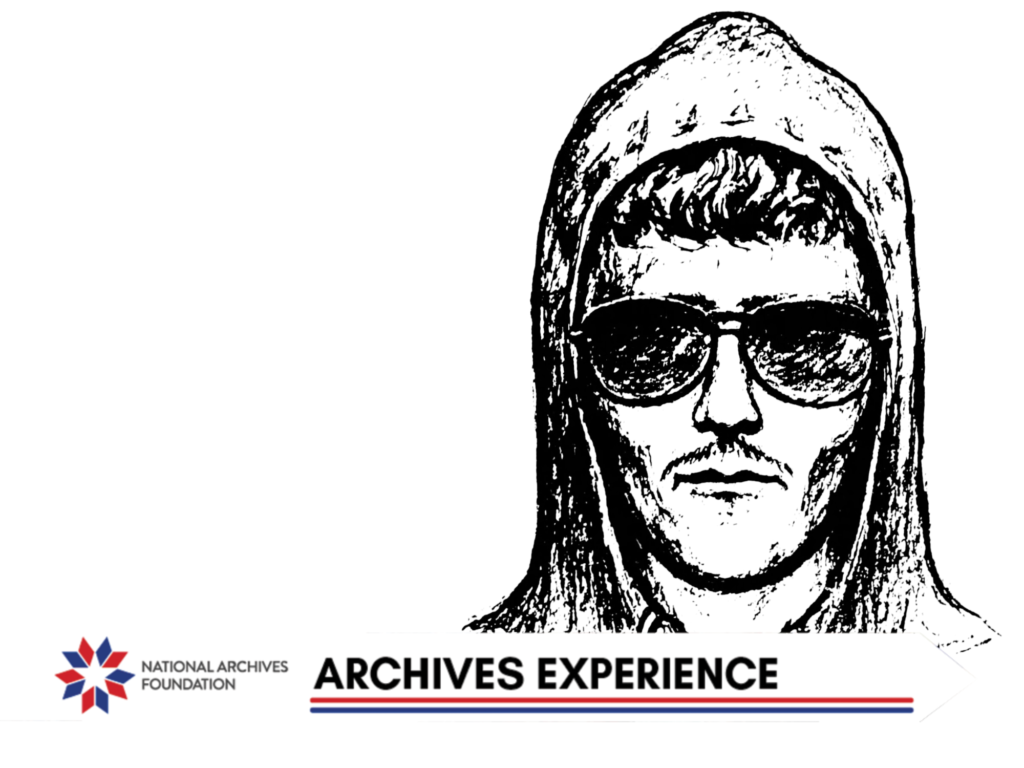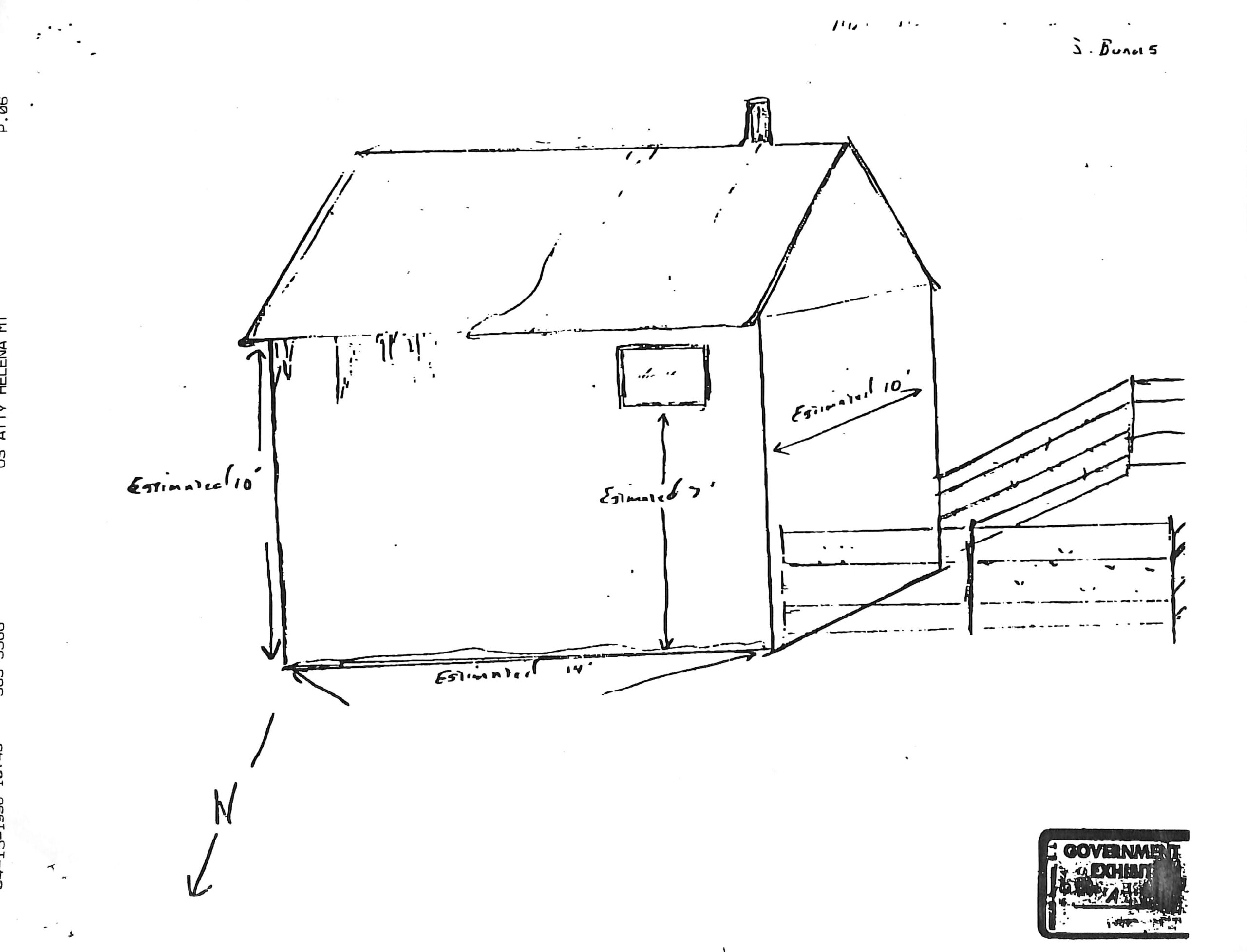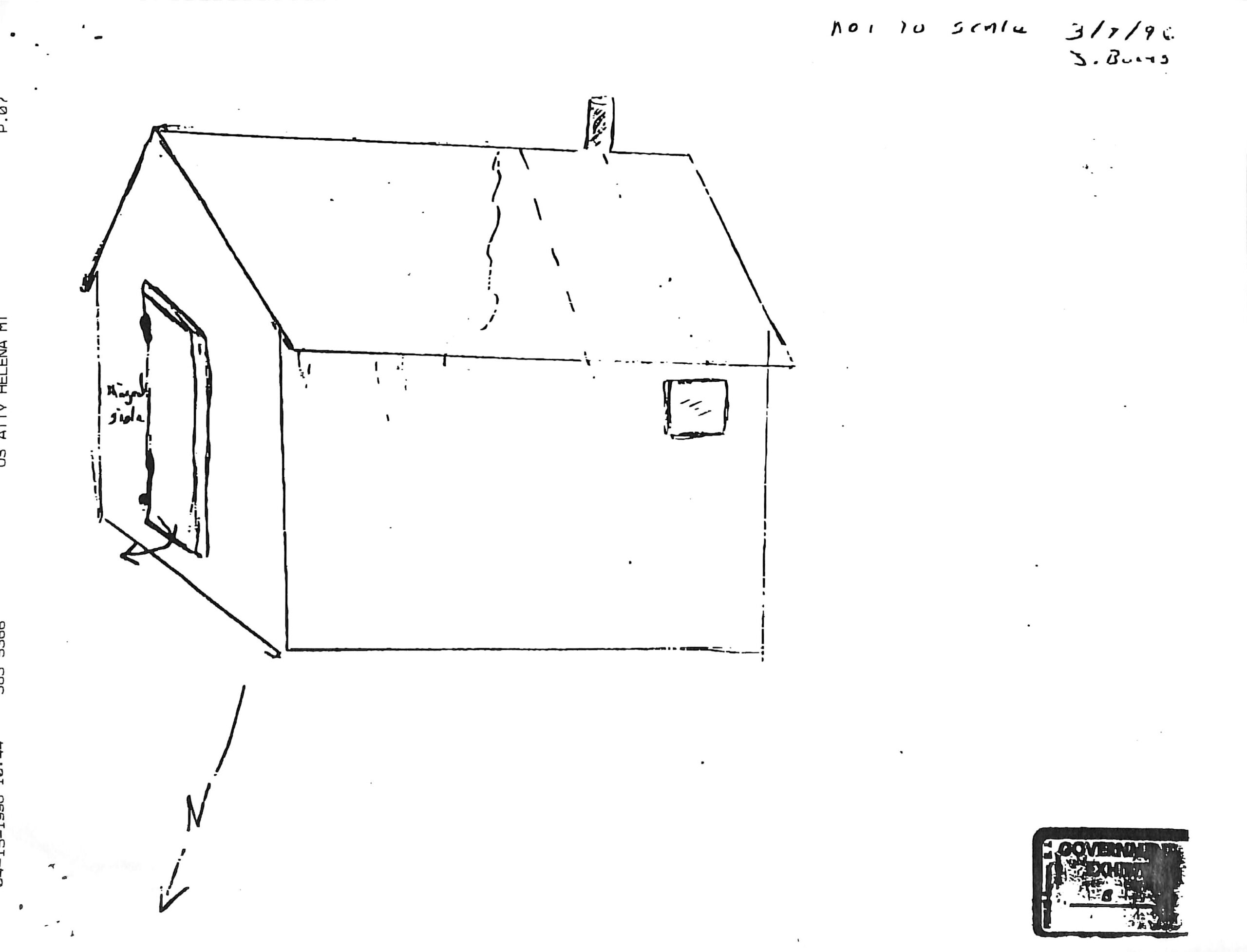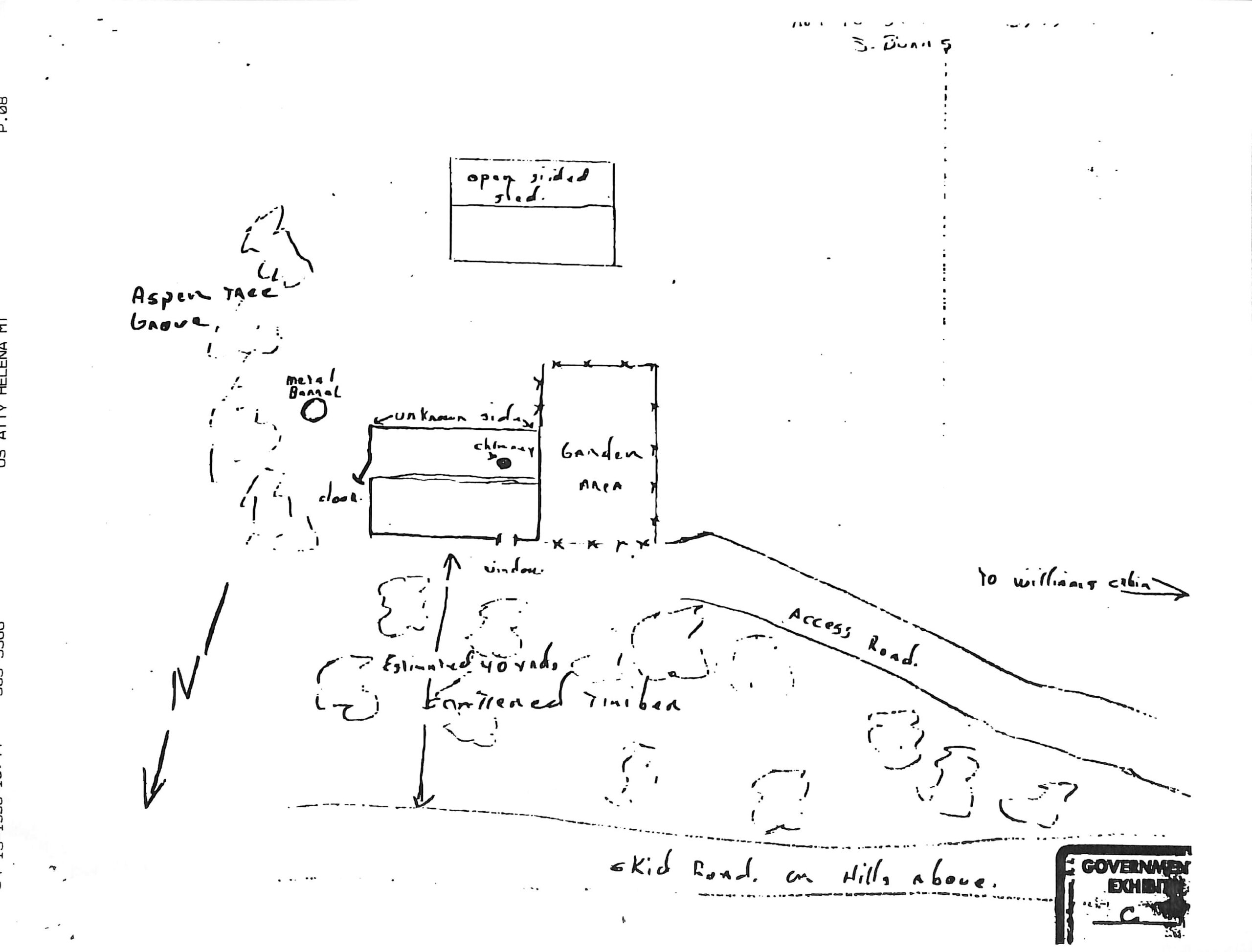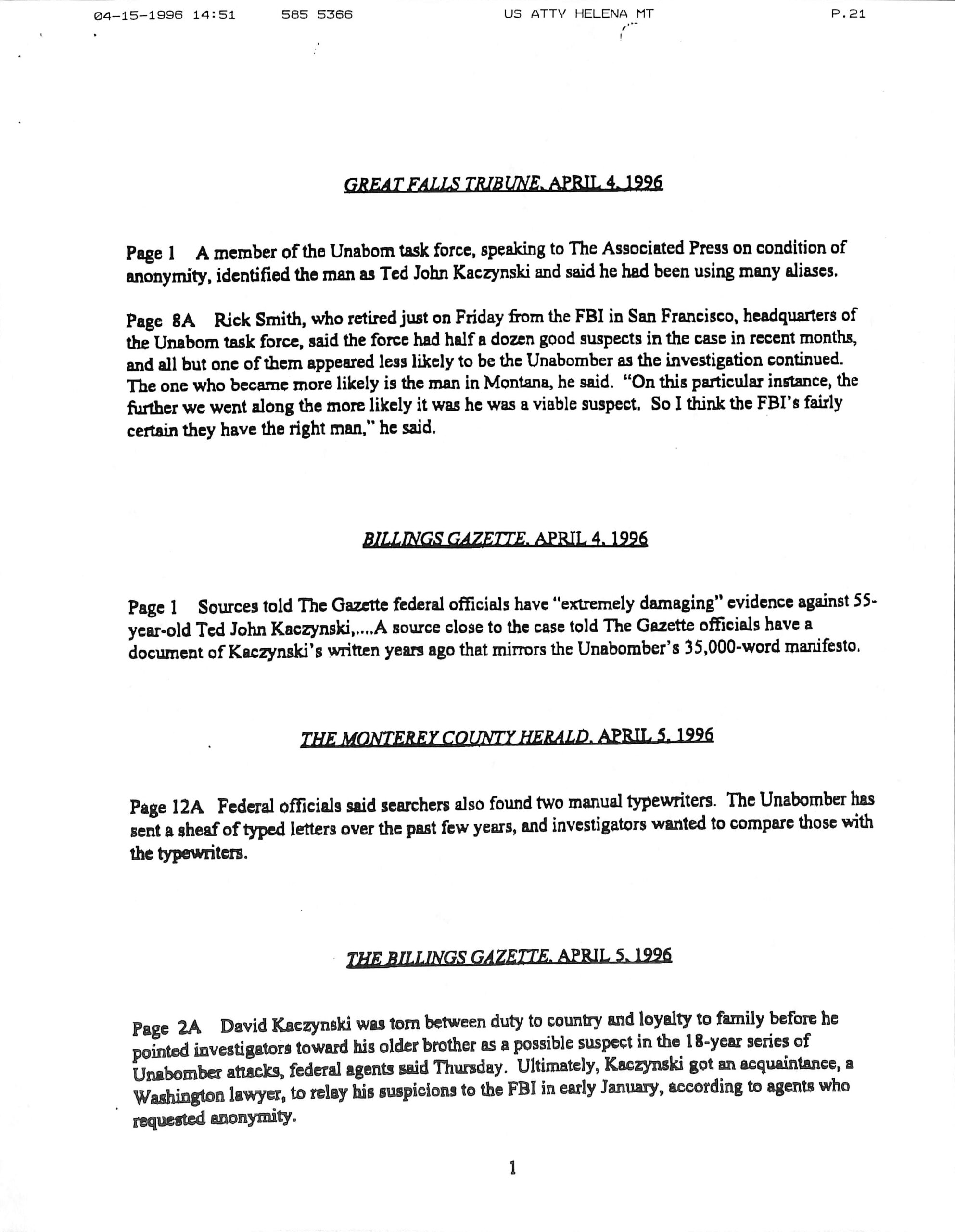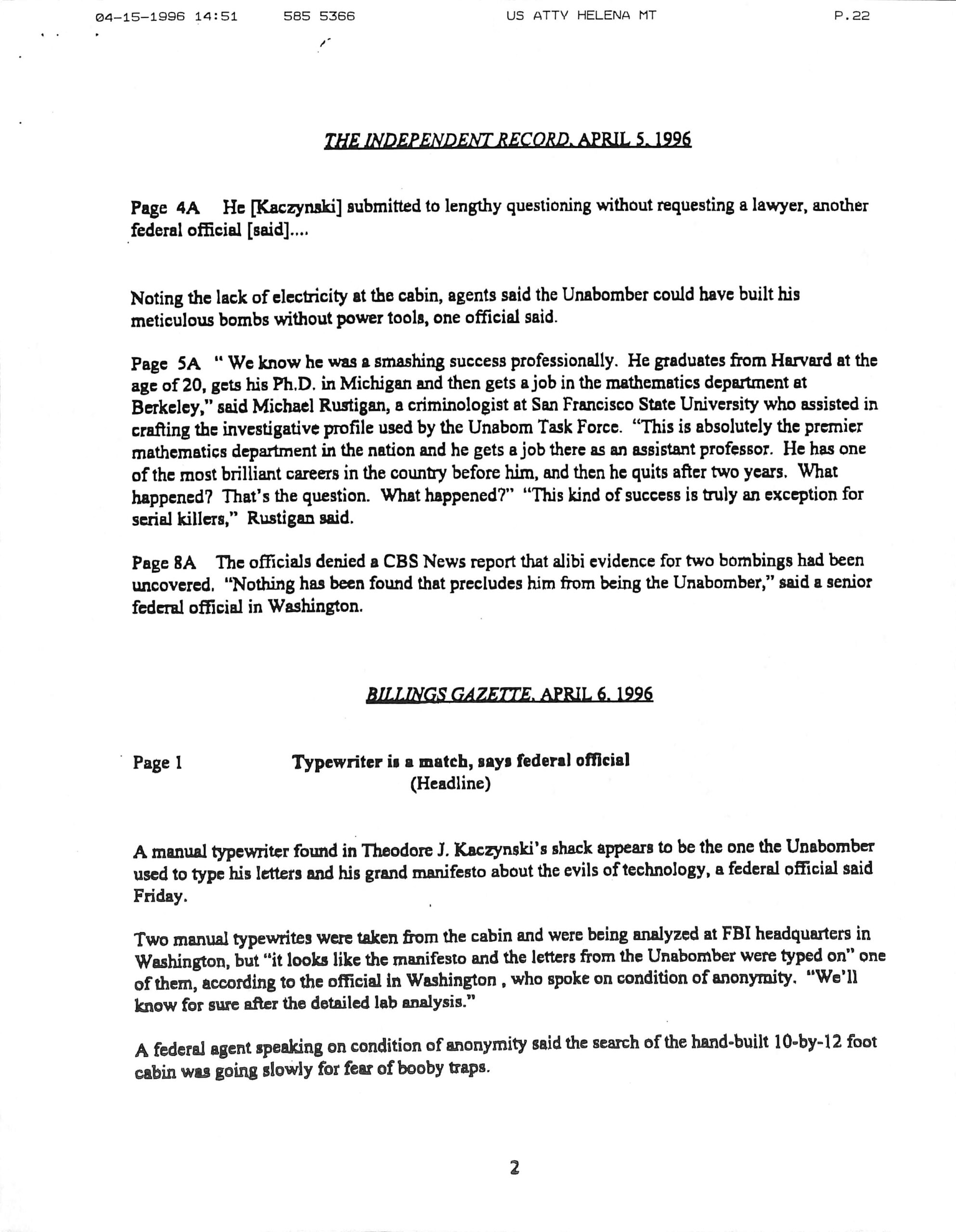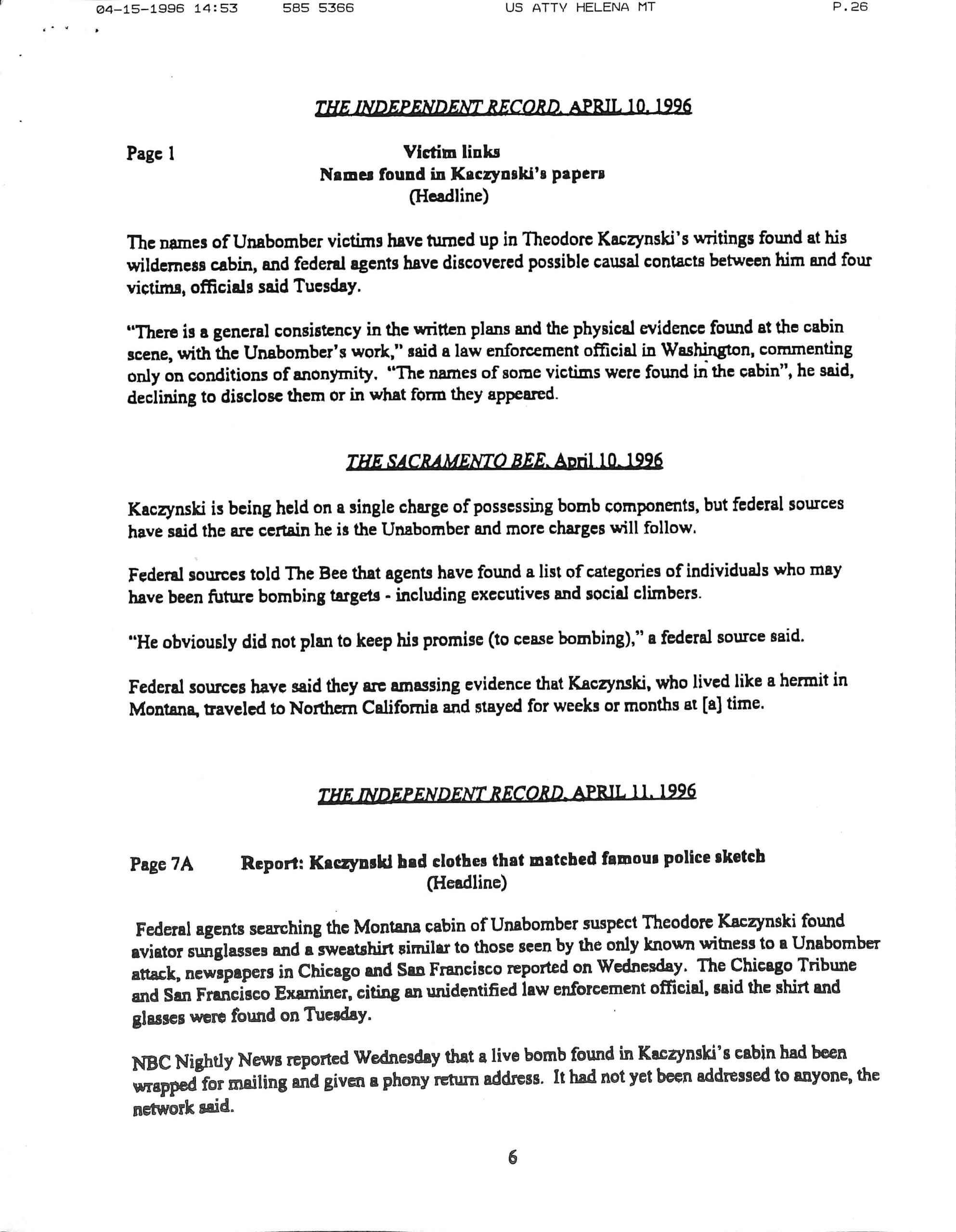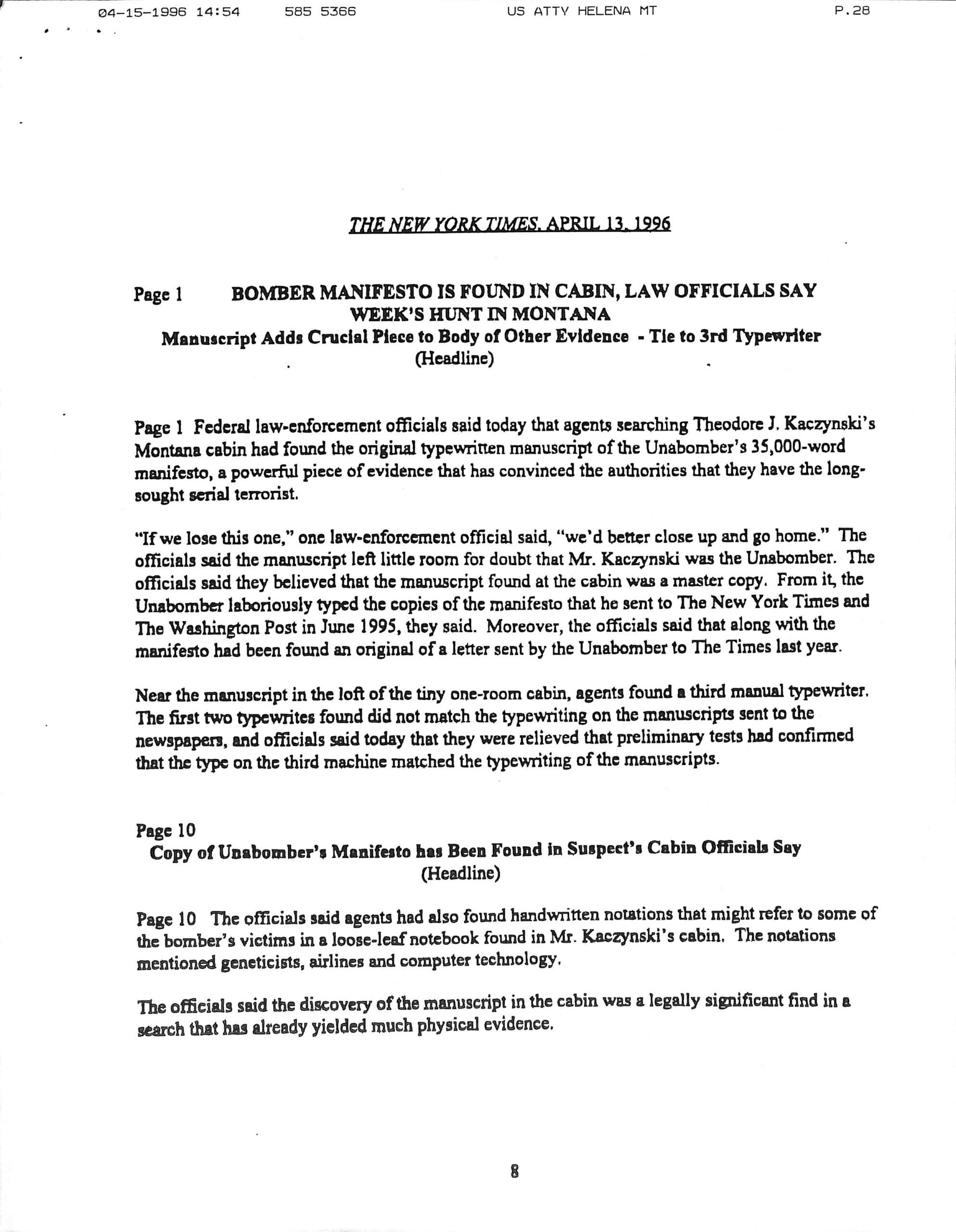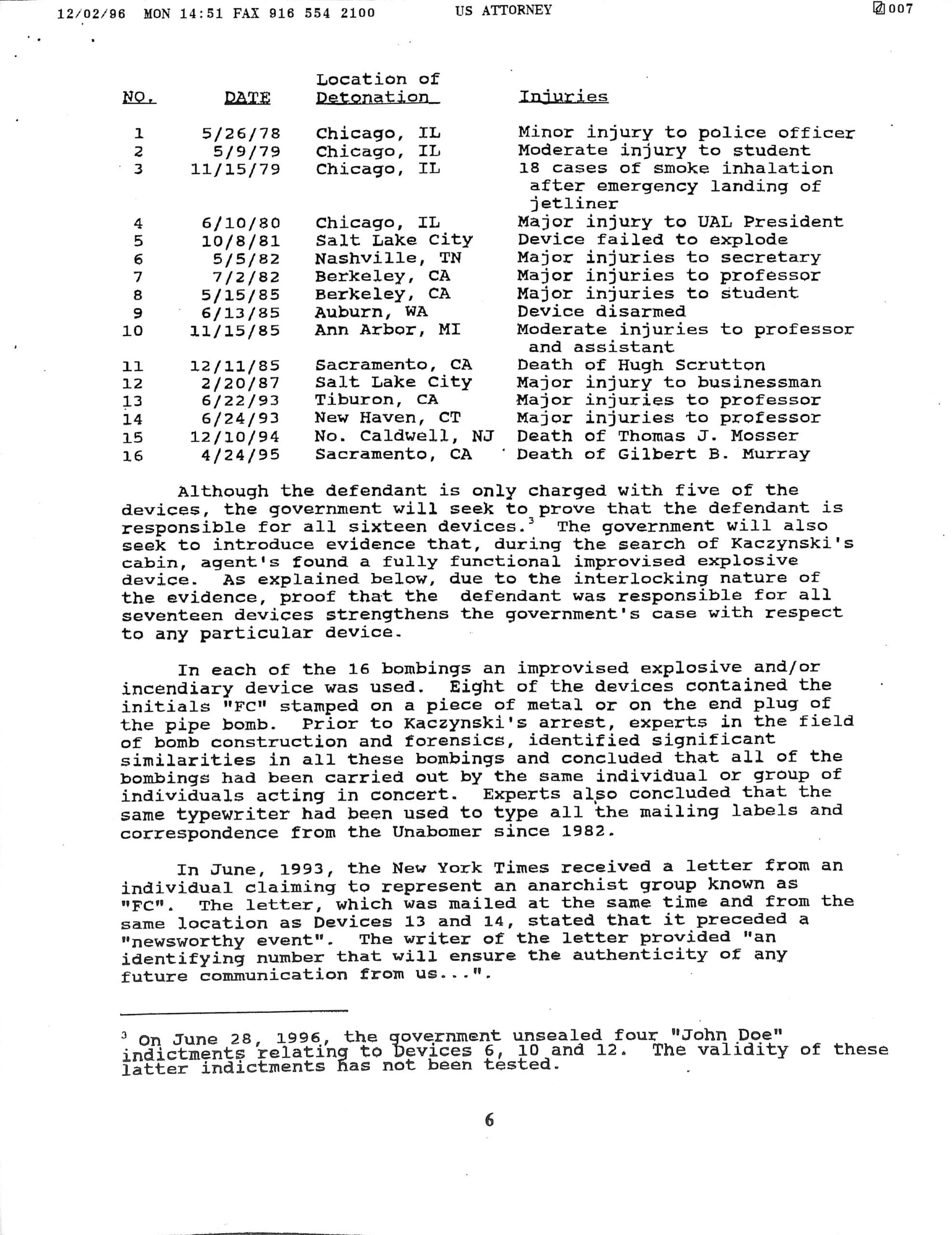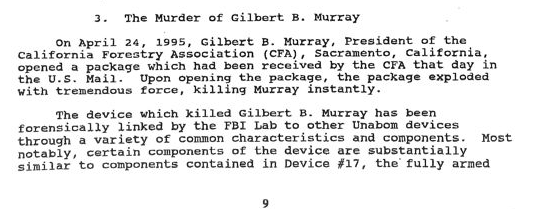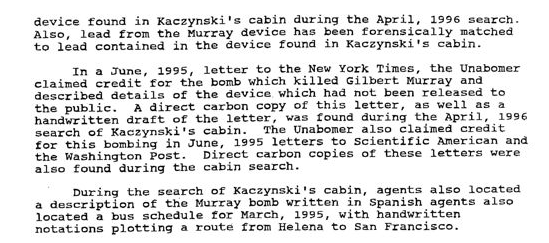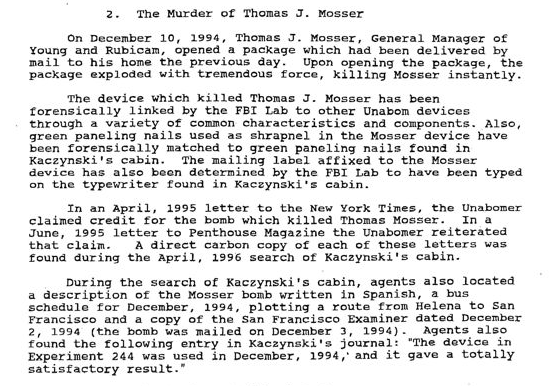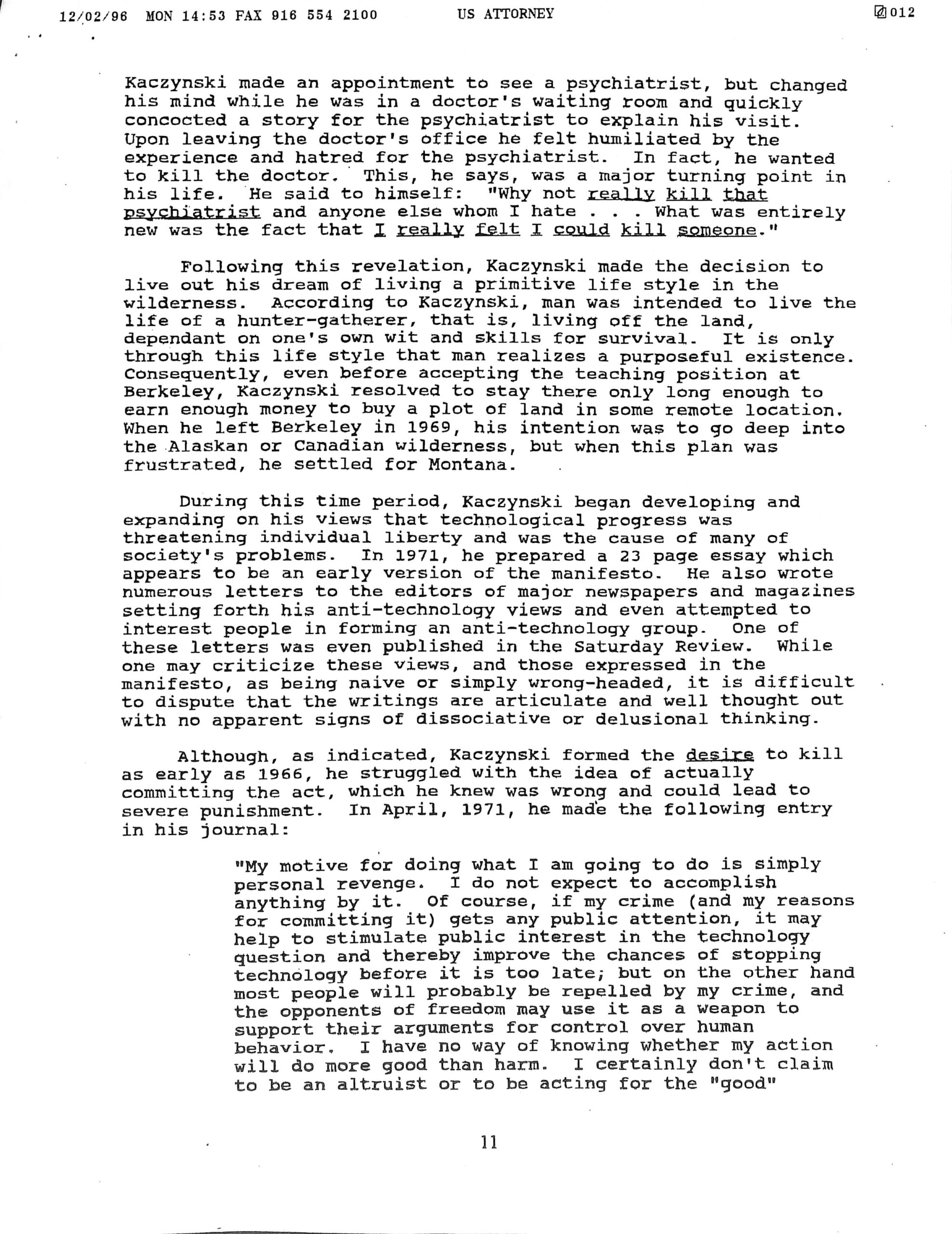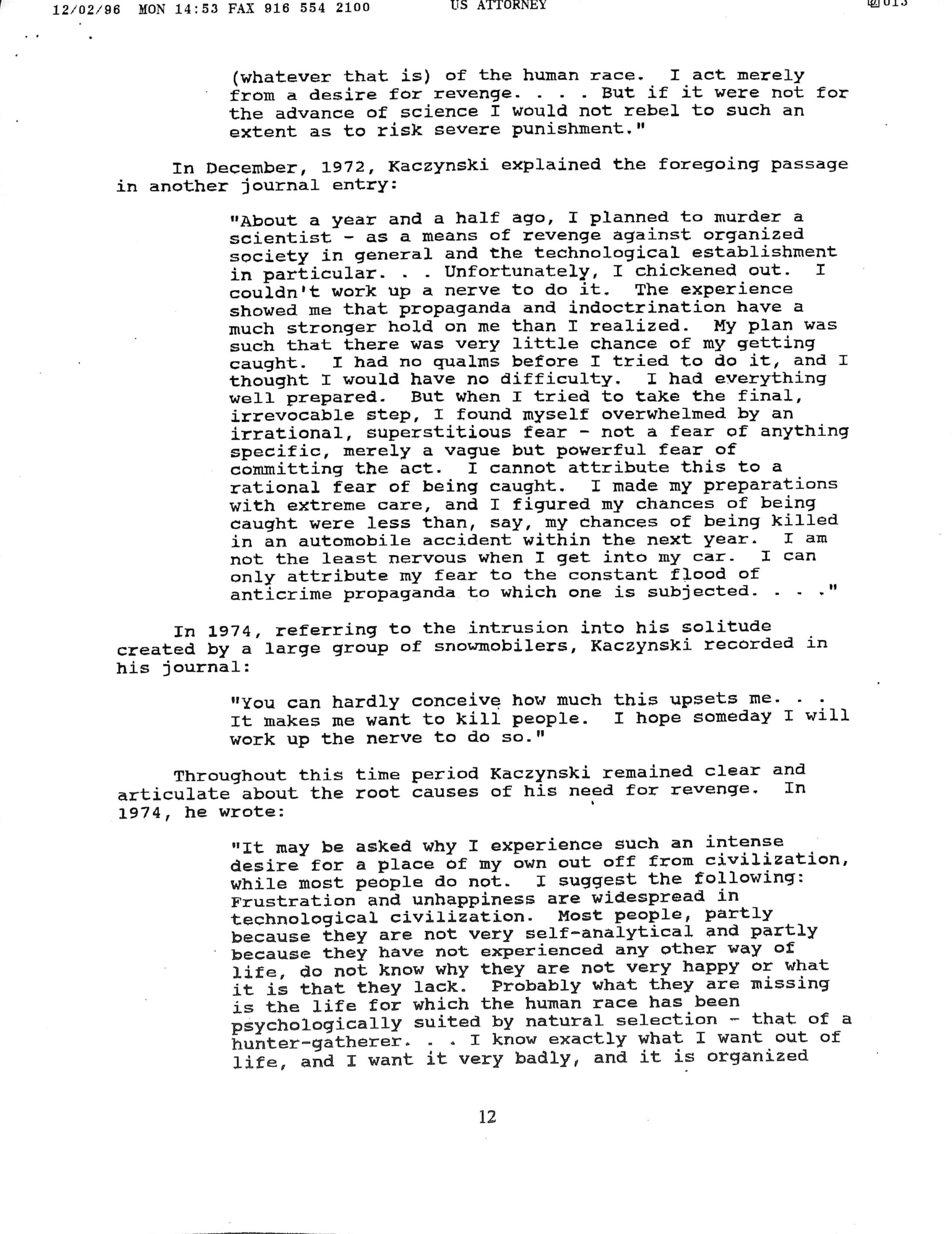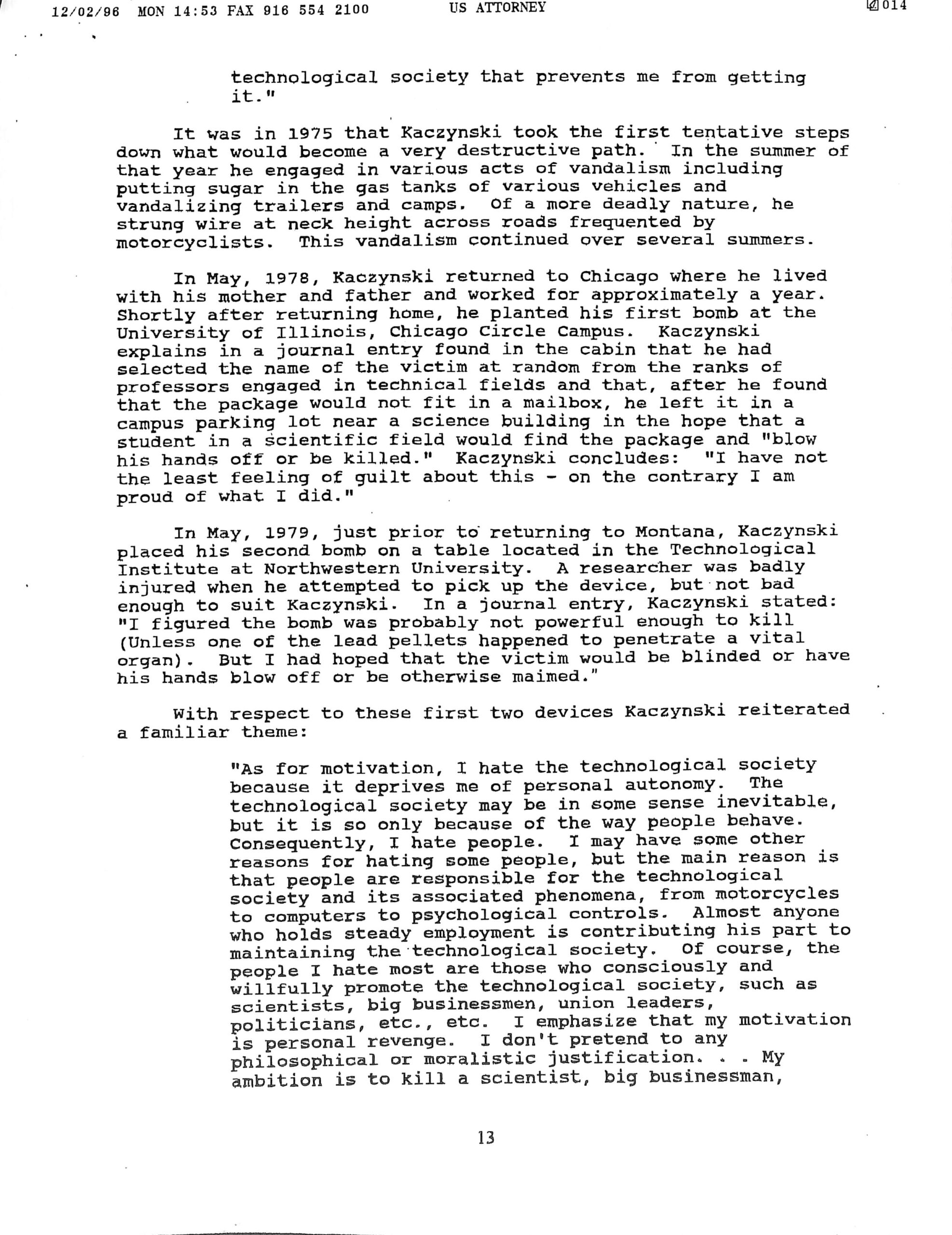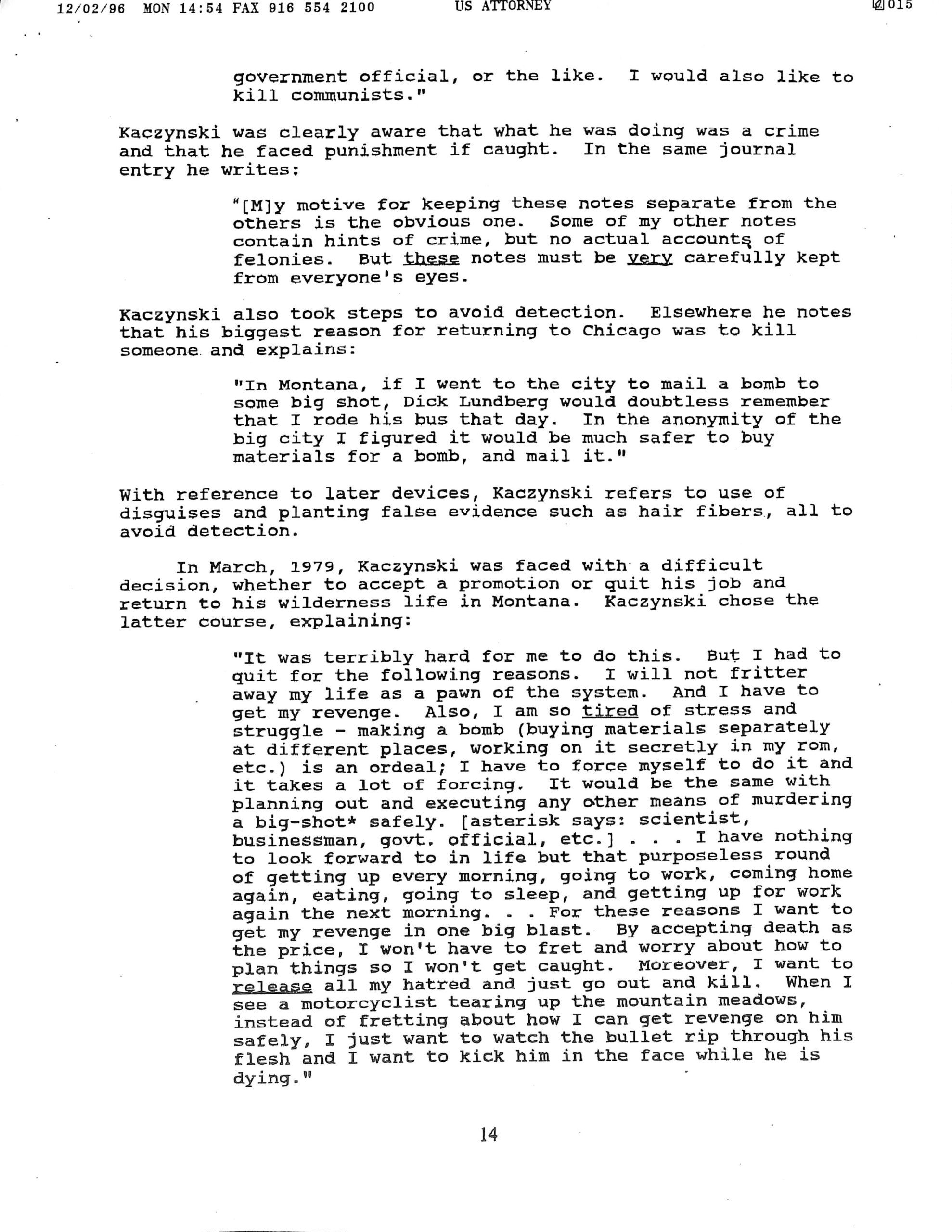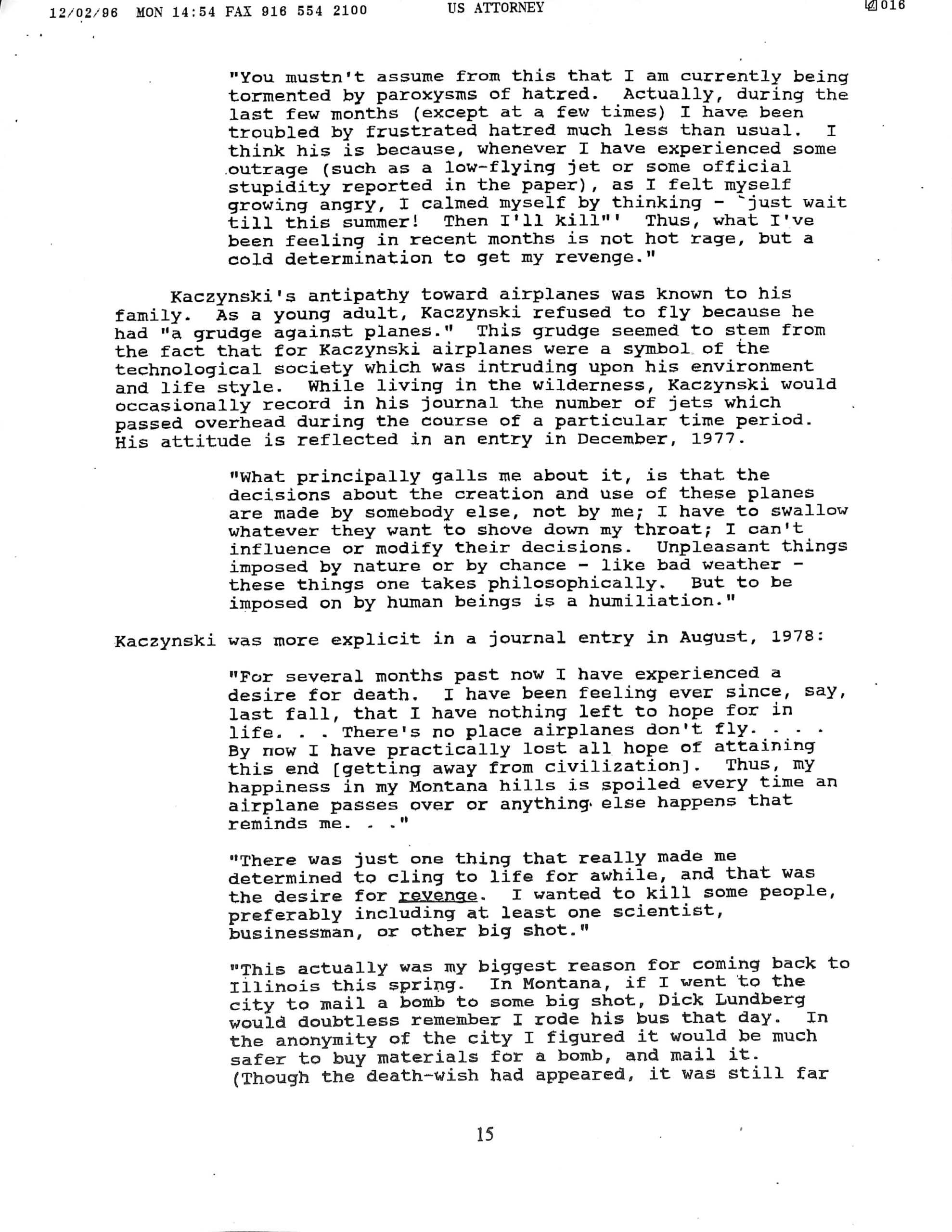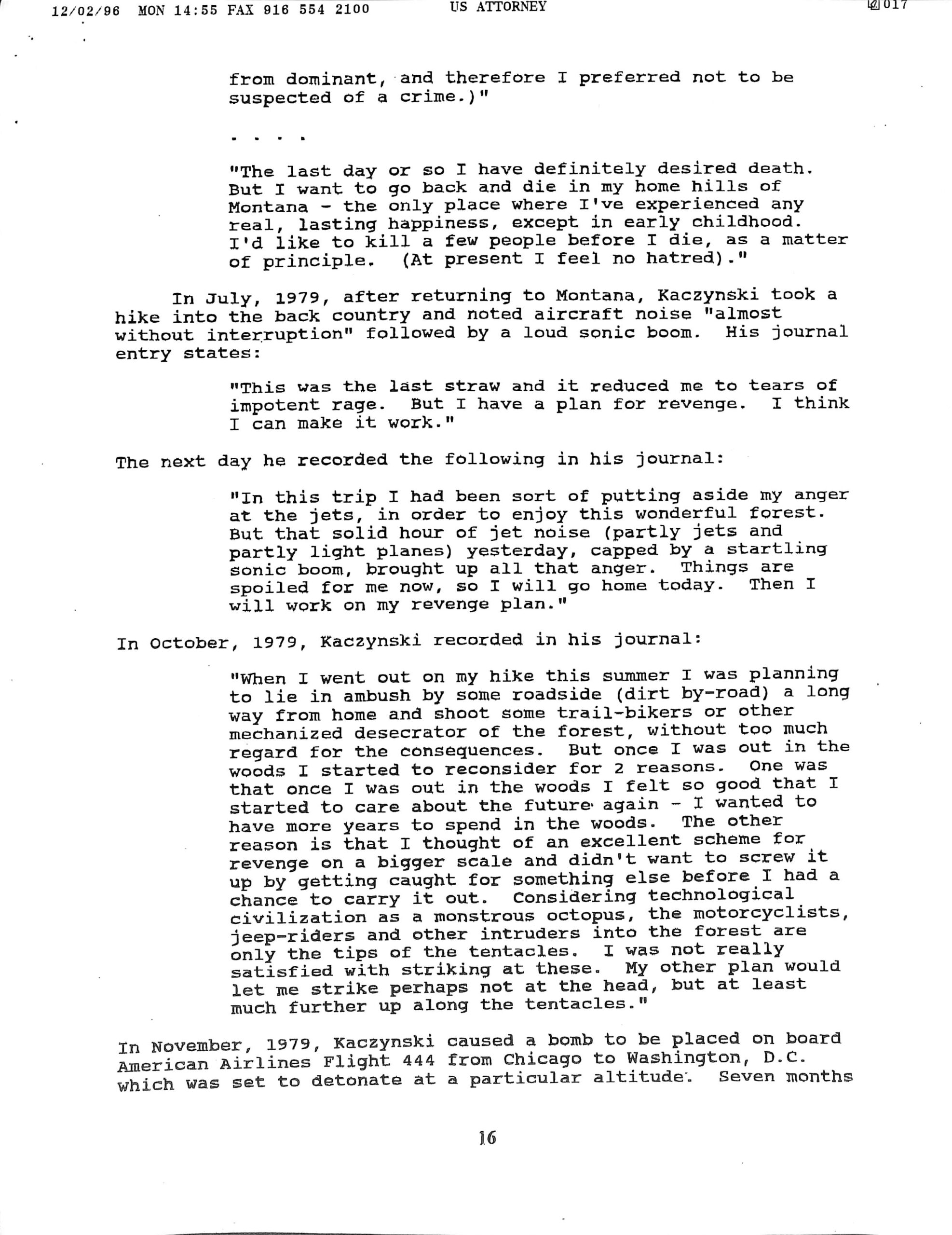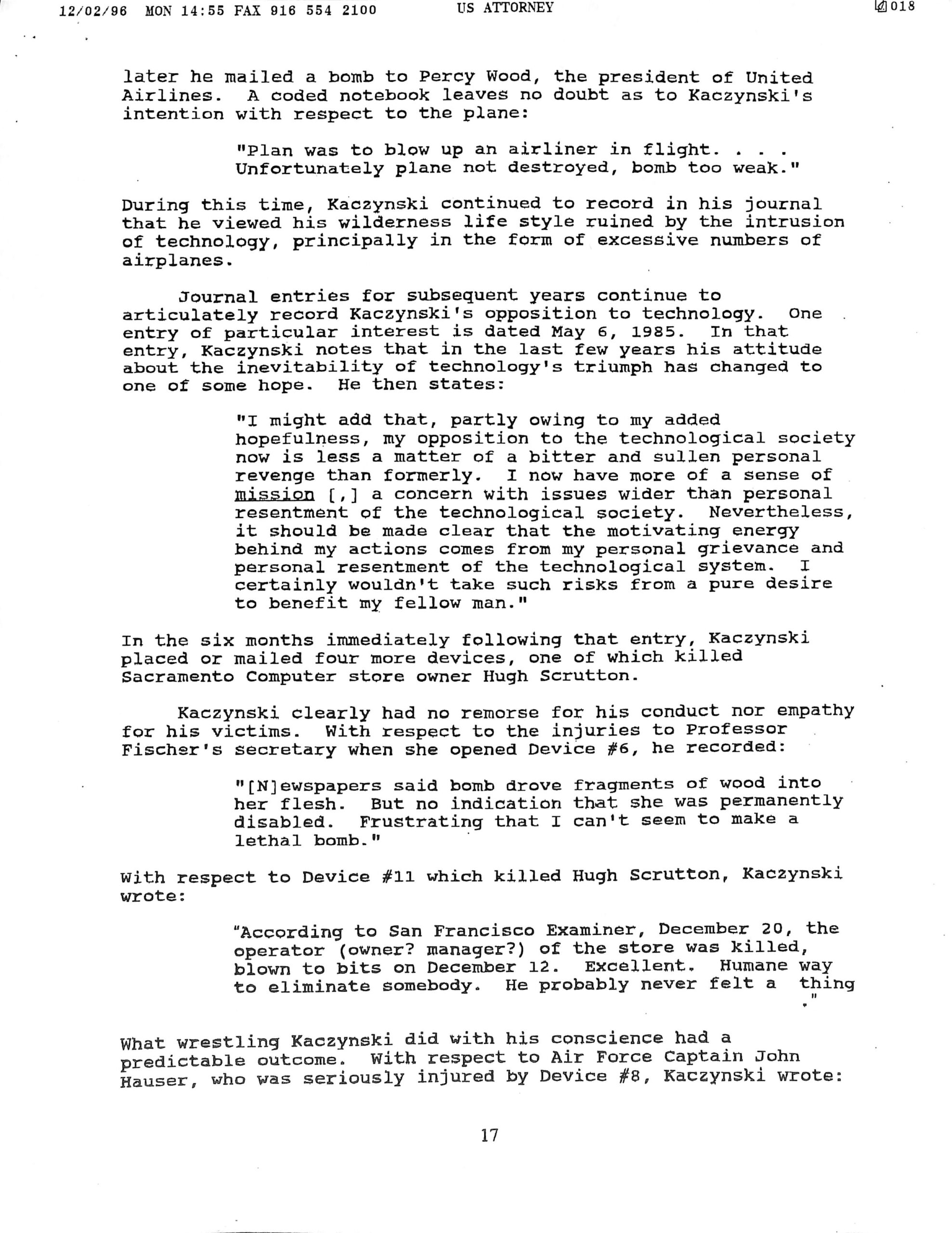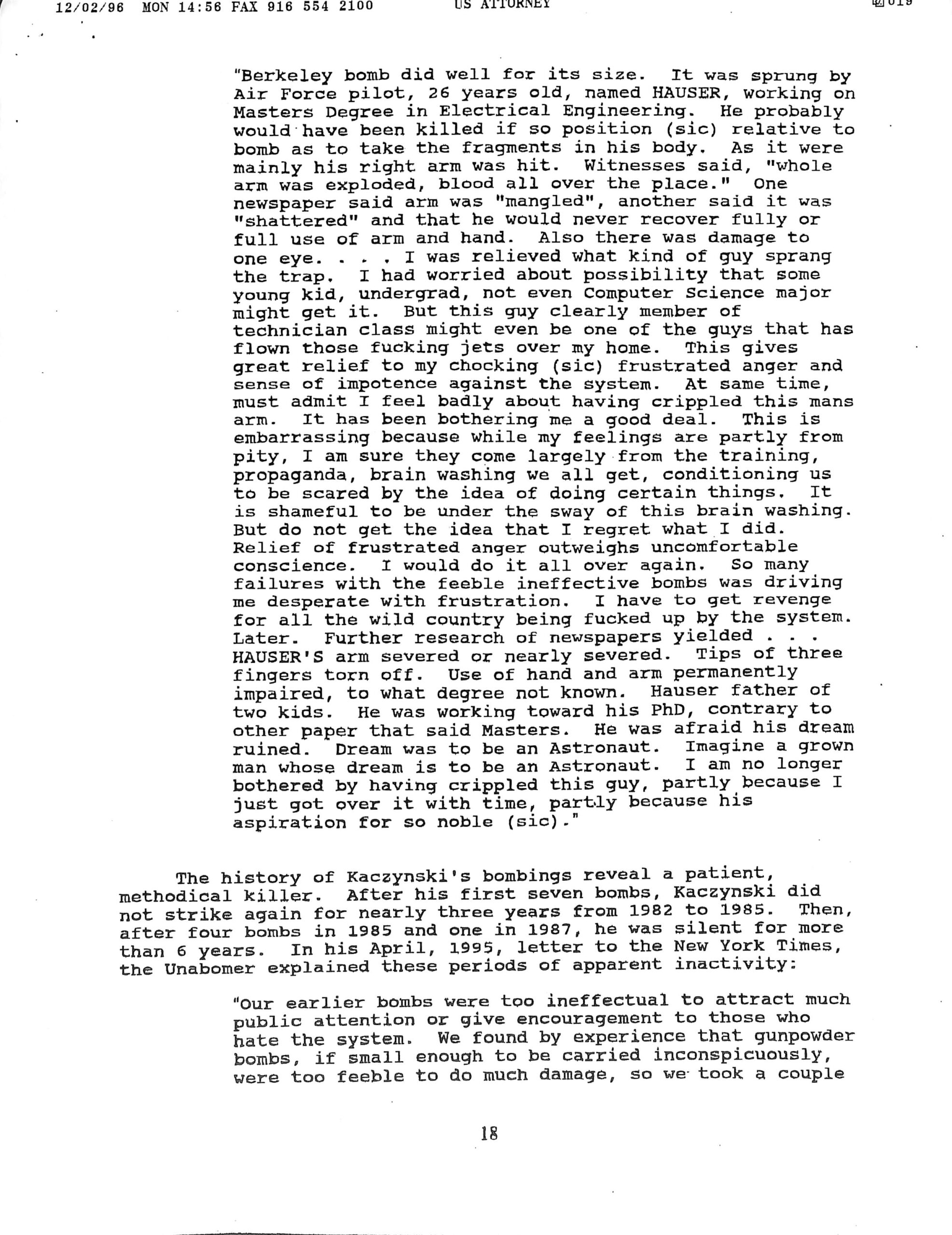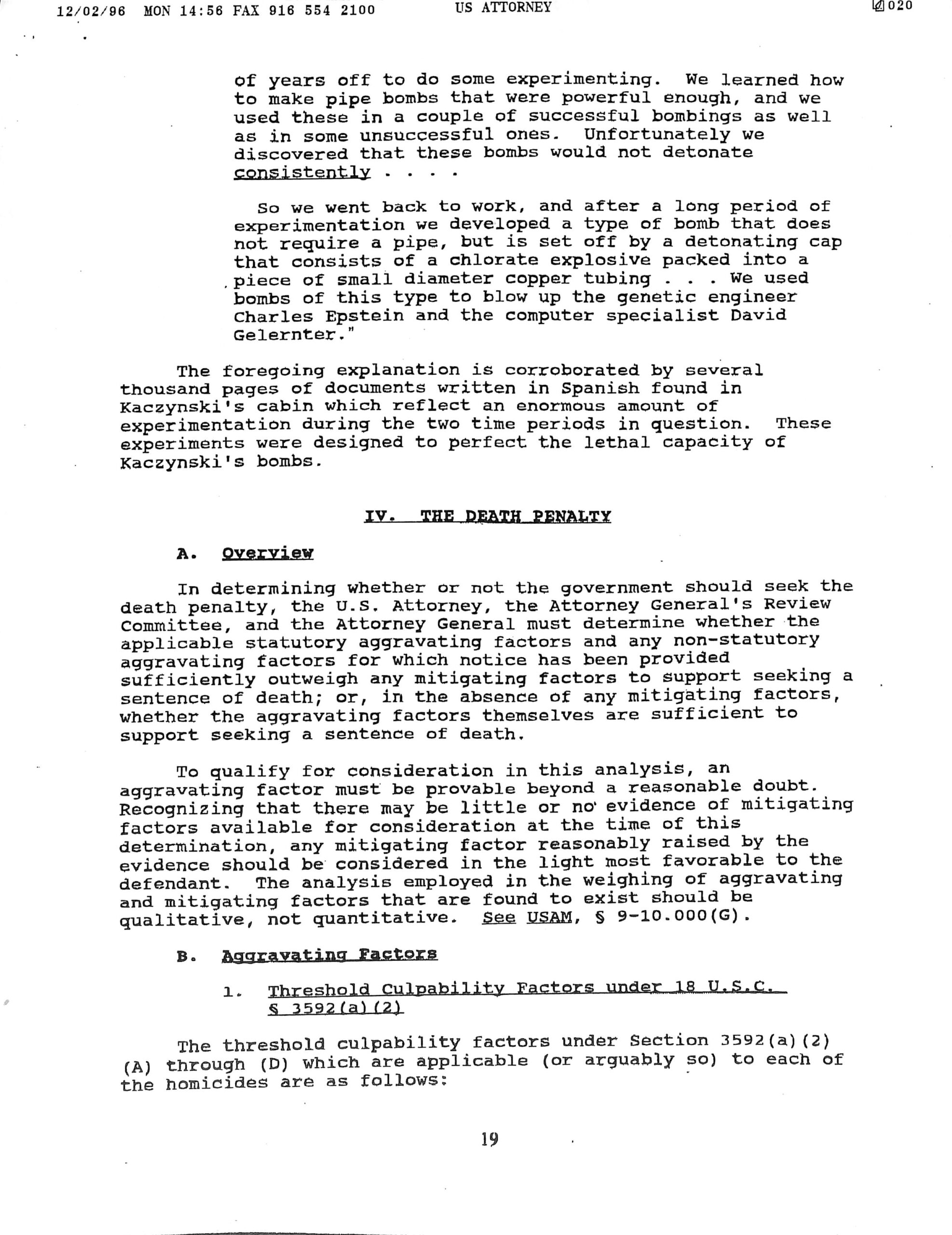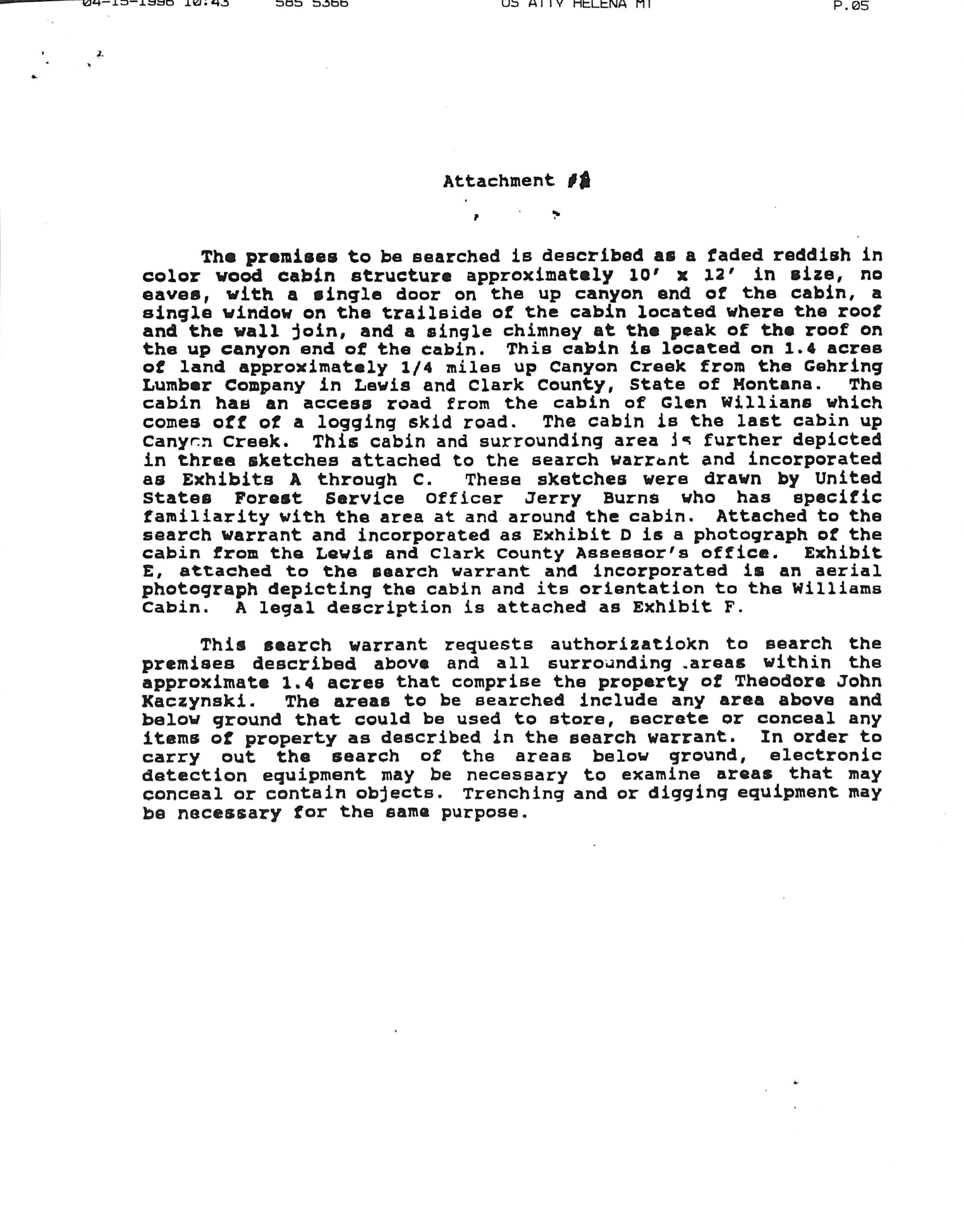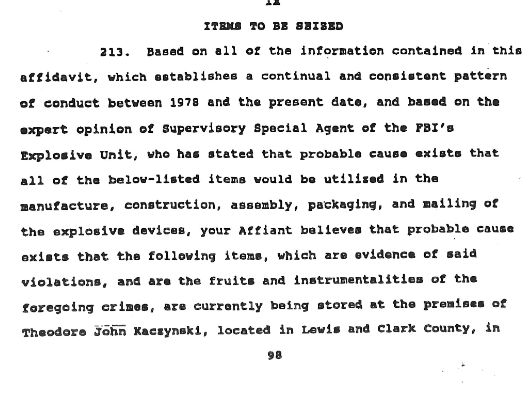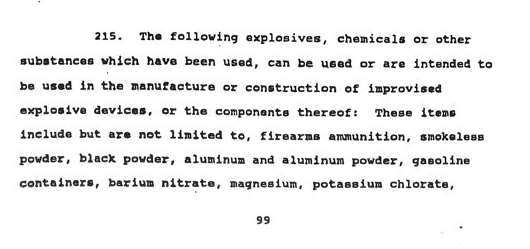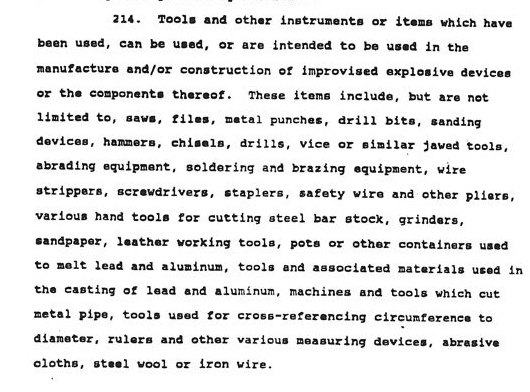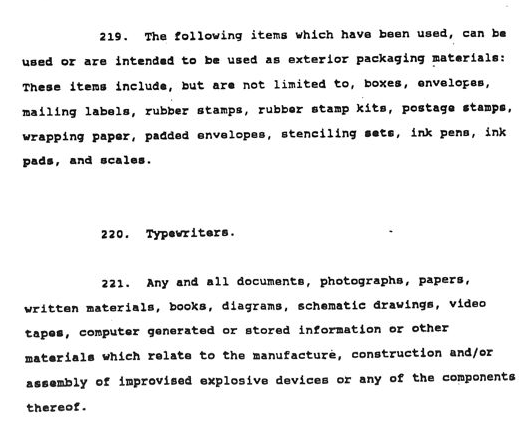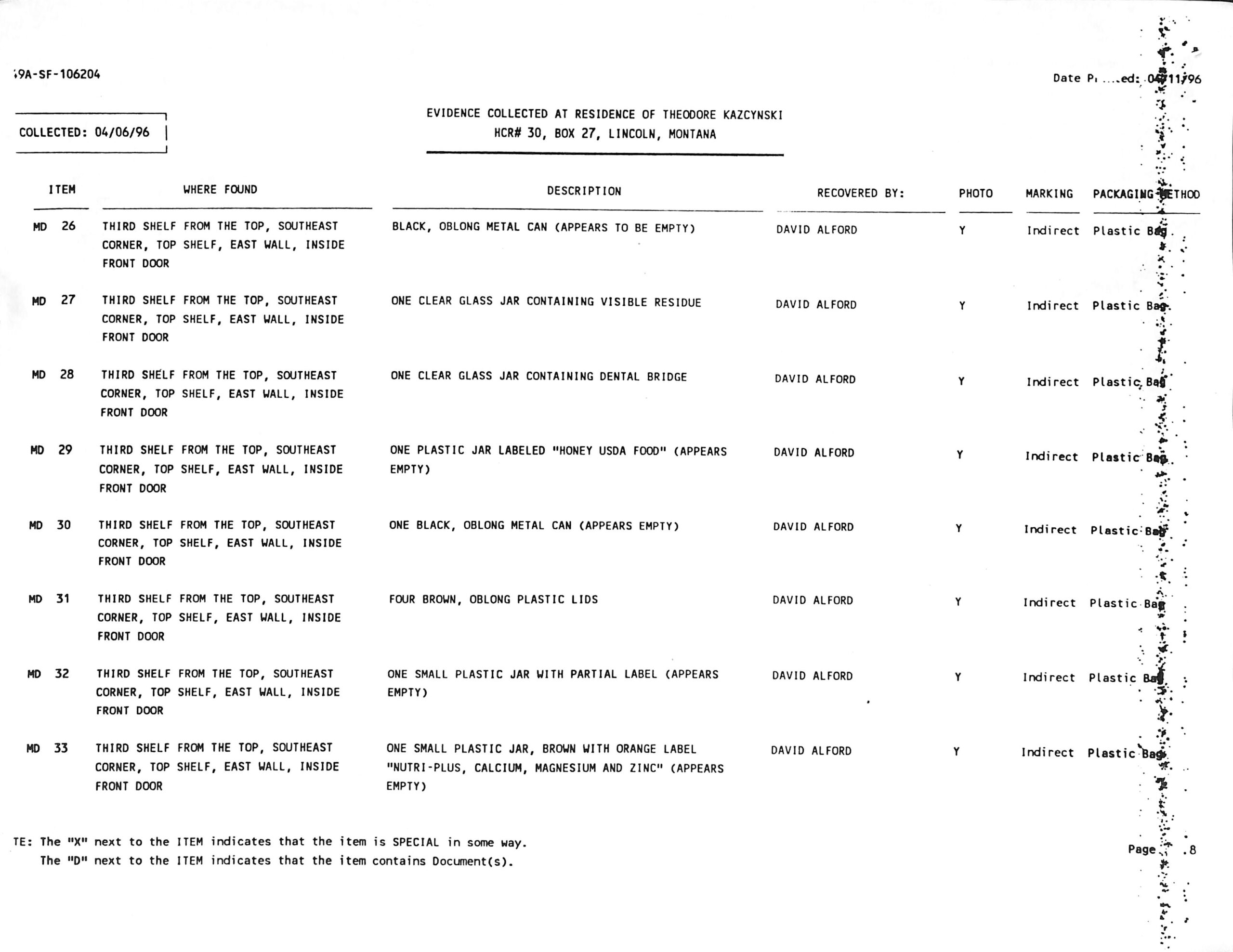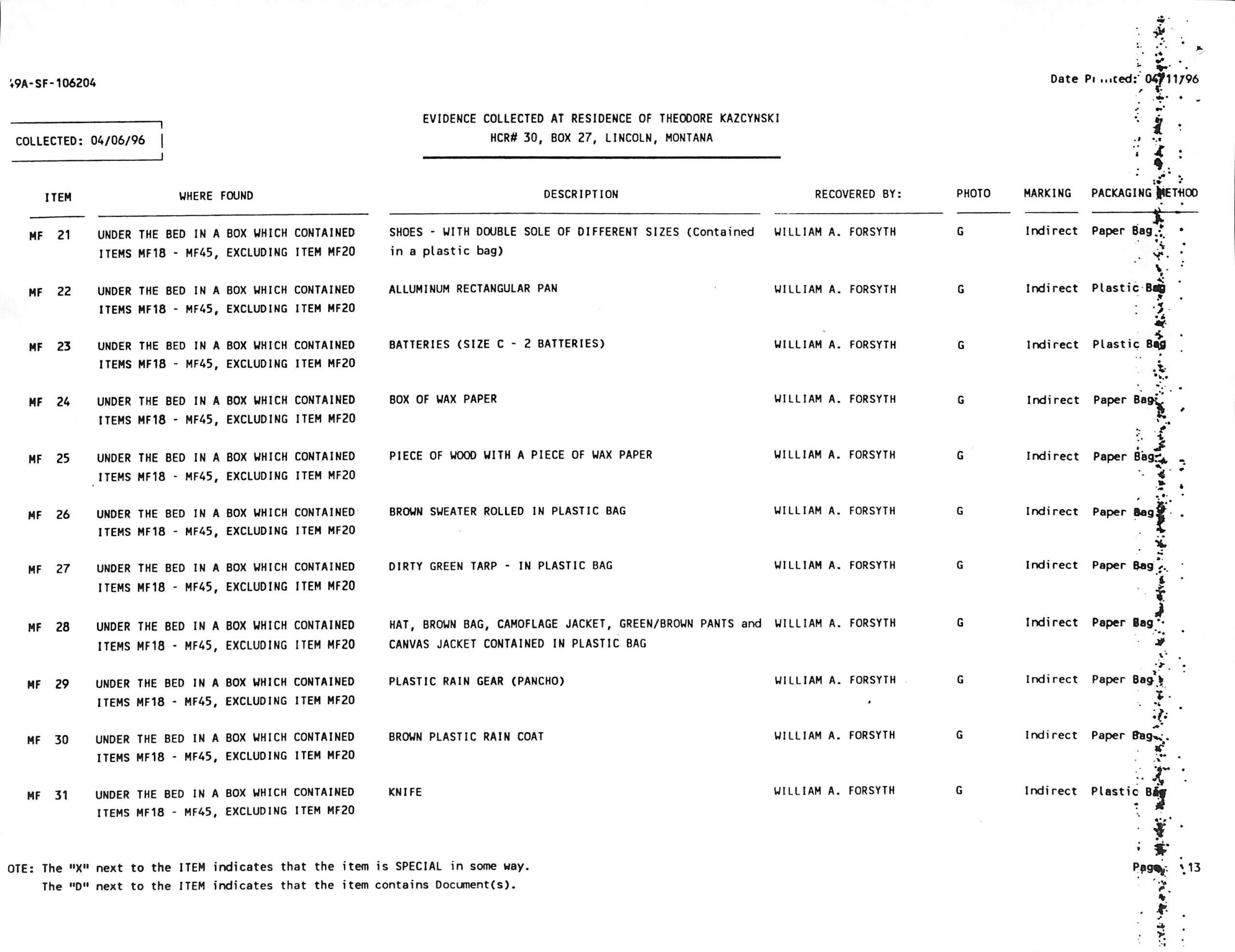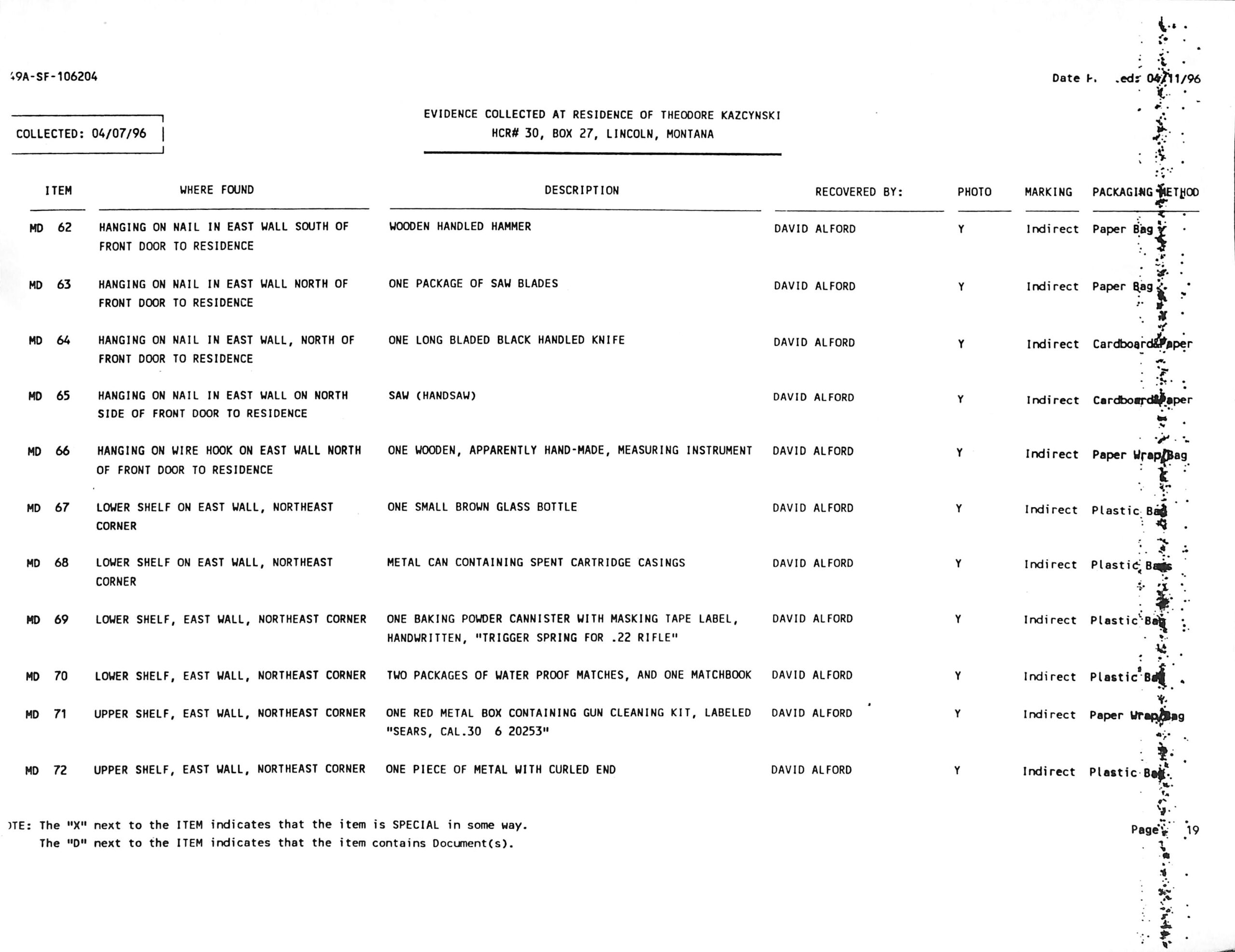Archives Experience Newsletter - July 11, 2023
The UNABOMBER
ADX Florence is a 37-acre prison complex about 100 miles south of Denver, Colorado. It’s notorious for a block of cells that was once called “Bombers Row” because a group of cells in close proximity all housed domestic terrorists who had used explosives as their main weapon.
One month ago on June 10, 2023, one of the most infamous residents of “Bombers Row,” Ted Kaczynski, passed away. His reign of terror lasted almost two decades; between 1978 and 1996, Kaczynski had the nation on edge, unsure of who would be the next target of one of his homemade explosives. His iconic moniker and eerie sketch artist rendition only made him more foreboding.
Because both the FBI and DOJ were involved in this nationwide manhunt and high-profile prosecution, the National Archives holds the records related to the Unabomber and his crimes. This week, we’re bringing out the evidence files…
In this issue
Off the Grid
Theodore John Kaczynski, the man who became the Unabomber, was born in Chicago on May 22, 1942. His father ran the family sausage-making business, and his mother was a homemaker. Ted had one sibling, David, who was born in 1948.
The Kaczynskis encouraged their sons to study rather than to pursue extracurricular activities. From a very early age, Ted was clearly intellectually gifted. His IQ tests ranked him at the genius level. Skipping the sixth and 11th grades, he went to Harvard on scholarship at age 16, where his social awkwardness and lack of privileged background isolated him from his peers.
In his sophomore year, Kaczynski took part in an experiment with 21 other undergraduates that Harvard psychology professor Henry A. Murray conducted. The experiment was part of the CIA-backed Project MKUltra that investigated how students reacted to extreme humiliation and abuse. The experiment lasted three years. Some have since theorized that Kaczynski’s mental state was adversely affected by the experiment, but others have contended that he showed signs of mental illness before he took part in the program.
Kaczynski graduated from Harvard with a degree in mathematics in 1962 and went on to the University of Michigan, where he completed a Ph.D. He then went to work at the University of California, Berkeley, as a tenured professor. But he left UC Berkeley suddenly, and, in 1971, he moved to Lincoln, Montana, where he built a one-room cabin with no electricity or running water. He lived on game he hunted, the produce of a garden he tended, and the money his family members sent him.
Making a Monicker
And it was in this period that Kaczynski started building the explosive devices that won him the moniker “Unabomber.” He sent them to people he had never met, although they were individuals whom he believed were furthering the expansion of technology, which he thought would lead to the ruination of society.
His first bomb injured a security guard at Northwestern University in Evanston, Illinois, in May 1978. About a year later, in May 1979, another bomb exploded at Northwestern, injuring a student. But in November of that year, Kaczynski’s third bomb went off in the cargo hold of American Airlines Flight 444 from Chicago to Washington, D.C., forcing the plane to land and injuring 12 people. Because bombing a commercial airliner is a federal offense, the FBI investigated the crime. It was at this point that the unknown perpetrator was dubbed the “Unabomber,” for “university and airline bomber.”
Between then and February 20, 1987, Kaczynski sent nine more bombs. Of these, two were defused, but seven detonated, injuring six people, including the president of United Airlines, two professors, several university employees, and one computer store owner, and killing one computer store owner in Sacramento, California. But Kaczynski had a close call in Salt Lake City when he deposited a bomb at the doorway of a computer store, injuring the owner there, and authorities circulated a flier that depicted the suspect. Apparently spooked by the attention, Kaczynski didn’t mail another bomb until 1983, when he resumed his reign of terror with a mail bomb to Charles Joseph Epstein, a geneticist at the University of California, San Jose, severely injuring him, on June 22, 1993.
Three more of Kaczynski’s bombs detonated—one on June 24, 1993, one on December 10, 1994, and one on April 24, 1995. According to the New York Times, his last victim, Gilbert Brent Murray, a lobbyist for the timber industry, who was married and had two children, “was so mutilated in the blast that his family was permitted to see him only from the knees down as a farewell.”
Manifesto
That same month, Kaczynski sent the New York Times and the Washington Post an offer. Calling himself “FC” for “Freedom Club,” and using the plural “we” to suggest he had accomplices, he offered to stop hurting people—although not to stop damaging property—if the newspapers would publish his 35,000-word manifesto, “Industrial Society and Its Future.” The publishers of the newspapers were hesitant to do so because they felt they were potentially being used by the terrorists, or by the authorities that were trying to track them down, or by both. After lengthy conversations between the publishers of the two newspapers, Attorney General Janet Reno, and FBI Director Louis J. Freeh, the publishers finally agreed. The papers split the cost of publishing the manifesto as a separate, pull-out section in the Washington Post in late September 1995. The layout and typeface of the section differed from the rest of the paper to distinguish it from the rest of the newspaper.
Kaczynski kept his word—he stopped mailing bombs. But more importantly, his brother David recognized phrases and even misspellings in his brother’s manifesto from his letters and contacted the authorities. In April 1996, the FBI arrested Ted Kaczynski at his cabin in Montana. When they searched the cabin, they found bomb-making materials.
For turning his brother in, David Kaczynski received a $1 million reward, which he used to fund the Unabom Survivors Fund. The fund donated $680,000, the balance of the reward money after taxes and legal fees, to the victims of the older Kaczynski’s bombings.
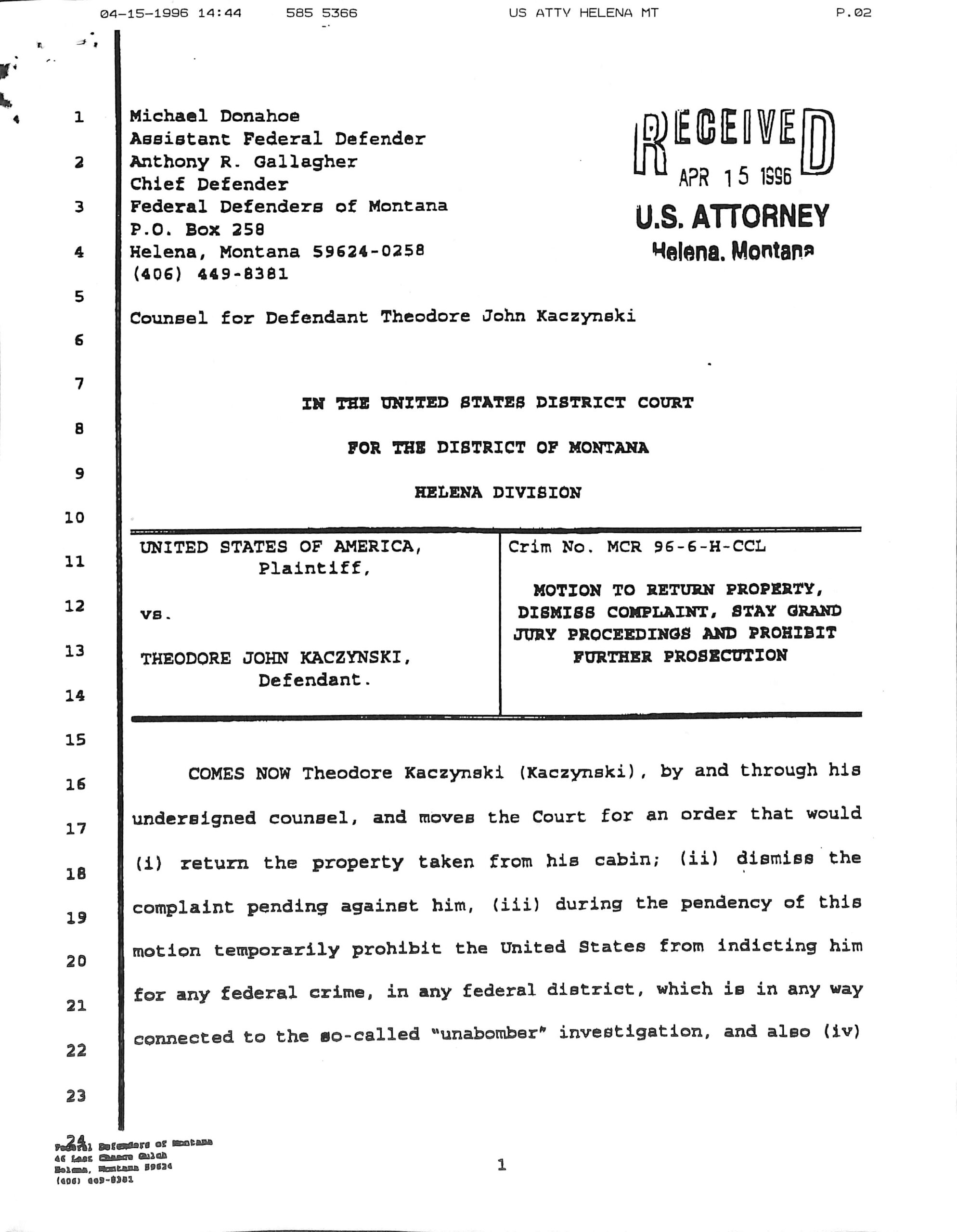
Motion for Return of Property
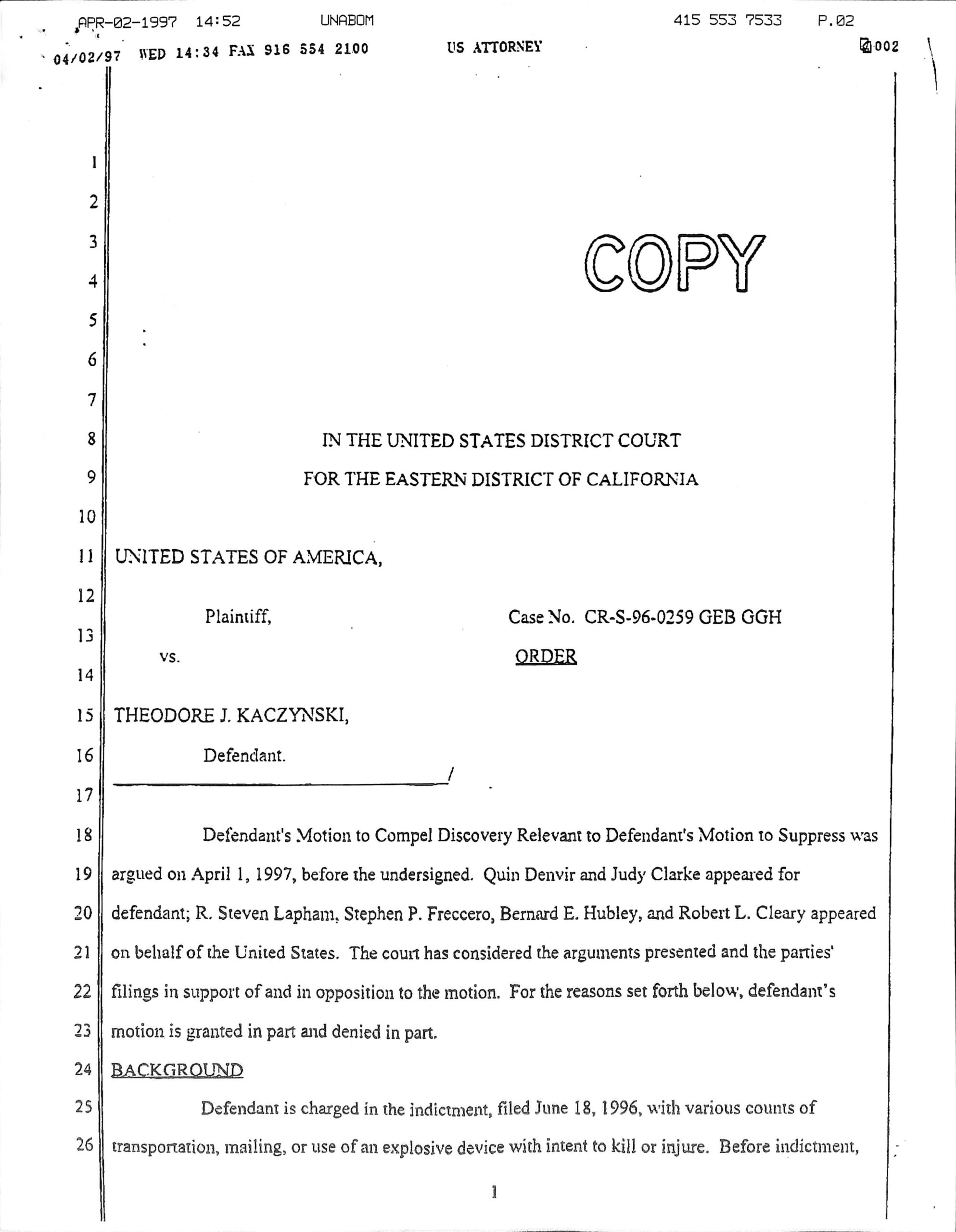
Discovery Motion
Merrick Garland, now the attorney general of the United States, supervised Ted Kaczynski’s investigation and prosecution. Kaczynski’s lawyers tried to use his manifesto as evidence that he suffered from schizophrenia, but when he got wind of their plan, he decided to represent himself in court, a move that his lawyers said only further proved he was mentally unfit to stand trial. Only the prospect of the death penalty finally convinced Kaczynski to plead guilty to all 16 bombings.
He was sentenced to four consecutive life terms plus 30 years. He served the majority of his sentence at ADX Florence, a supermax prison in Florence, Colorado.
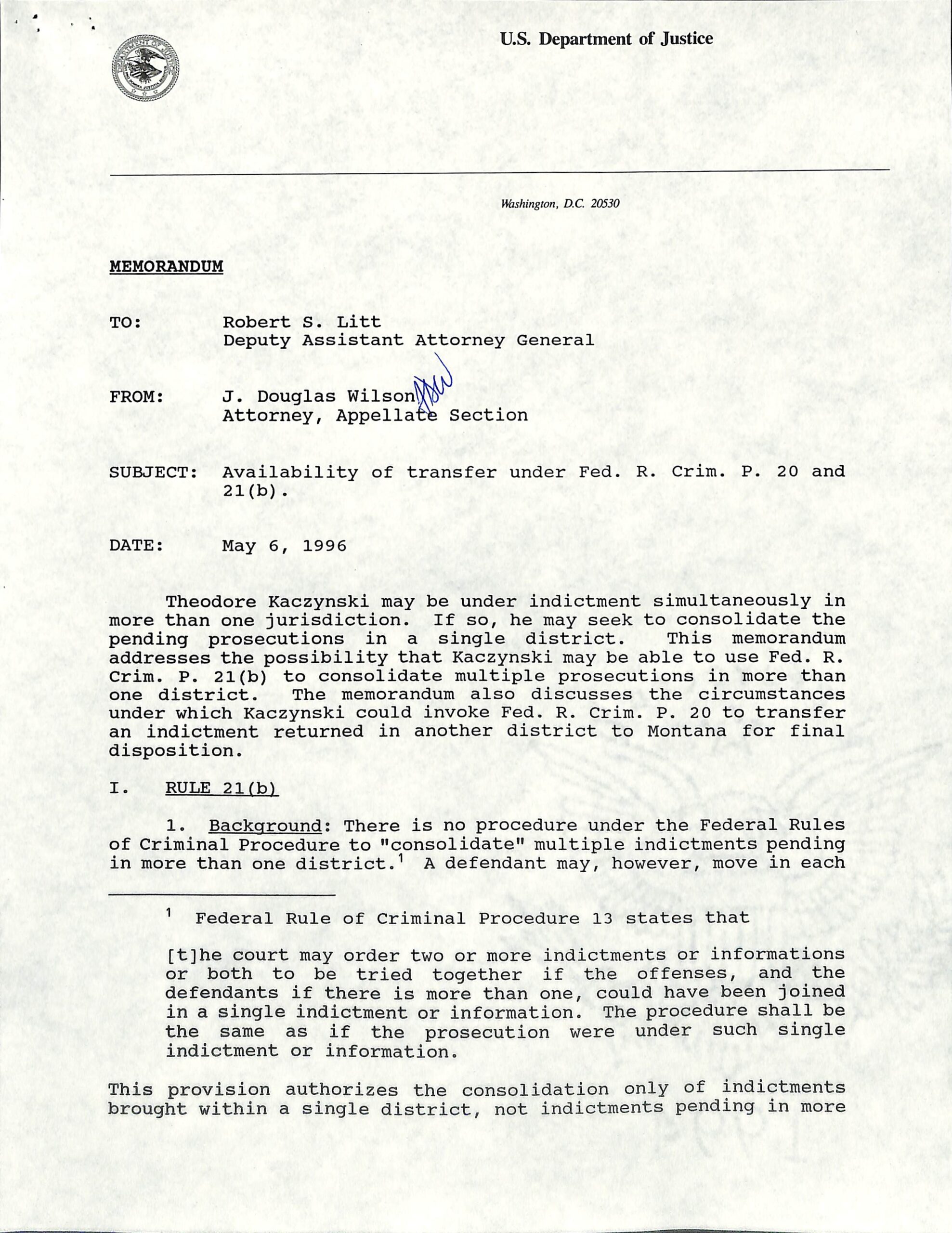
Multiple Indictments Letter
At Florence, Kaczynski befriended several other terrorist prisoners, including Timothy McVeigh, the Oklahoma City Bomber, and Ramzi Ahmed Yousef, who bombed the World Trade Center in 1993.
On December 14, 2021, after being diagnosed with late-stage cancer, he was transferred to the Federal Medical Center in Butner, North Carolina. On June 10, 2023, Kaczynski was found unresponsive in his cell. He was taken to a hospital where he was pronounced dead of an apparent suicide.
In Kaczynski’s obituary, The New York Times observed that recently, some young people had begun to express support for him because he “was no longer the mysterious killer who had belatedly projected an outlandish justification for violence; now he was the originator of one of many styles of transgression and all-knowing condemnation to adopt online. His crimes lay in a past young people had never known, and he was imprisoned, no longer an active threat to society.”
Over an 18-year period, however, Kaczynski was an active threat to society—he brutally injured and murdered people all over the country whom he did not know to perpetuate his own agenda.




